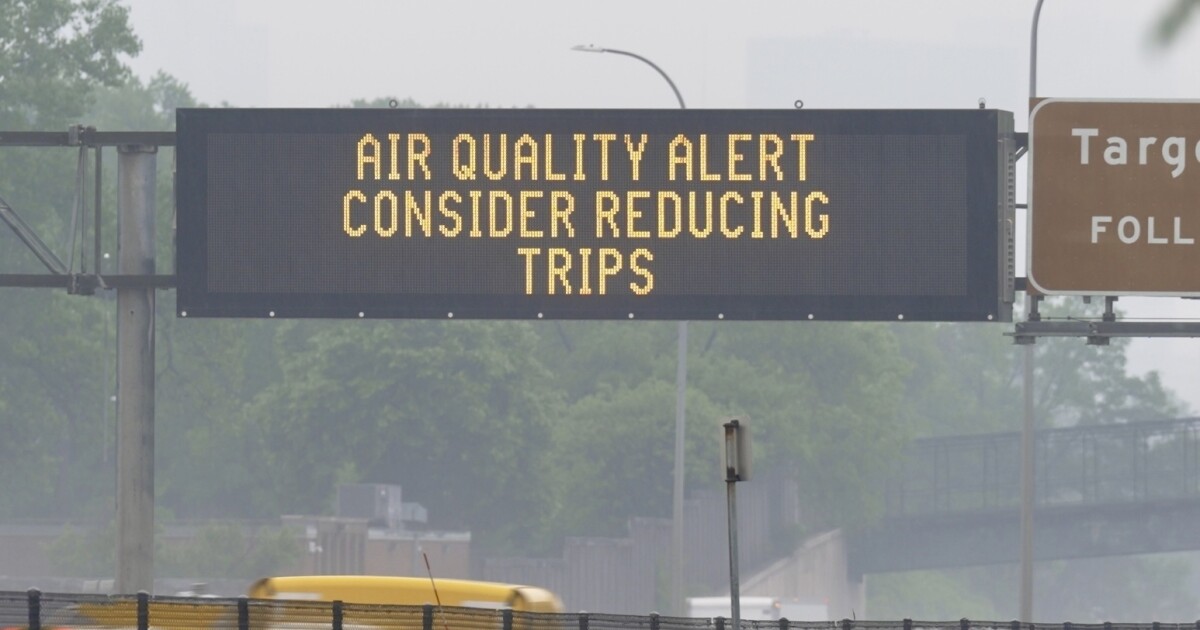Canadian Wildfires Create Health Crisis, Affect Air Quality Overseas
- Better American Media

- Jun 4
- 2 min read

Smoke from devastating wildfires in Canada has swept across the Midwest of the United States, significantly deteriorating air quality and raising health concerns in several states. As the effects ripple outwards, residents in regions including Minnesota, Wisconsin, and Michigan are facing advisories due to levels of air pollution classified as "very unhealthy."
With over 27,000 Canadians forced to evacuate from their homes across Manitoba, Saskatchewan, and Ontario due to these fires, the resulting smoke has traversed oceans, affecting skies as far away as Europe. In Minnesota, particularly in the Minneapolis-St. Paul metro area, air quality remained compromised despite precipitation, prompting statewide warnings from the Minnesota Pollution Control Agency.
Current Air Quality Status
Recent assessments indicate that air quality indicators have reached alarming levels, particularly in the Upper Midwest. Areas affected include not only Minnesota but also places as distant as Michigan, the Dakotas, Nebraska, and even down to Georgia. According to the U.S. Environmental Protection Agency’s AirNow platform, Minneapolis-St. Paul reported Air Quality Index (AQI) values soaring to 250, which categorizes these conditions as very unhealthy. Improvement was seen towards the latter part of the day, but significant concerns remain.
The AQI measures air quality based on pollutants such as particulate matter and ground-level ozone. The particulate matter, a primary concern from wildfires, poses severe risks to respiratory health. While most regions reported moderate conditions, pockets of unhealthy air quality continued to be noted, especially in Michigan’s Upper Peninsula.
Healthcare Response
Hospitals across the affected areas have experienced an increase in respiratory-related admissions. Hennepin Healthcare has noted a surge in patients exhibiting symptoms exacerbated by smoke inhalation, including shortness of breath and wheezing. Dr. Rachel Strykowski, a pulmonologist at the facility, recommends that individuals limit outdoor activities and, when necessary, wear N95 masks to reduce exposure to harmful particulates, as standard cloth masks do not offer adequate protection.
Wildfire Impact in Canada
The wildfires, particularly those raging in Manitoba, have displaced a significant number of residents. The city of Winnipeg has become a refuge for thousands escaping the flames, with Manitoba alone accounting for over 17,000 evacuees, including individuals from the town of Flin Flon. The region of Saskatchewan has also seen substantial evacuations, with 2,500 people leaving La Ronge amid the emergency. According to Canadian officials, efforts are being coordinated to combat the fires, which have already tragically resulted in loss of life and massive carbon emissions—estimated at 56 megatonnes by Copernicus.
Transatlantic Consequences
The scale of the Canadian wildfires has now extended their effects beyond North America, with smoke traveling all the way to Europe. While Copernicus has reported hazy skies in parts of Europe, current assessments suggest that ground-level air quality remains largely unaffected. The ability for smoke to drift across the Atlantic emphasizes the intensity of the wildfires, with high-altitude smoke plumes detected reaching far into Greece and the eastern Mediterranean. Mark Parrington, a senior scientist at Copernicus, noted, “That’s really an indicator of how intense these fires are, that they can deliver smoke,” highlighting the severity of this wildfire season.

